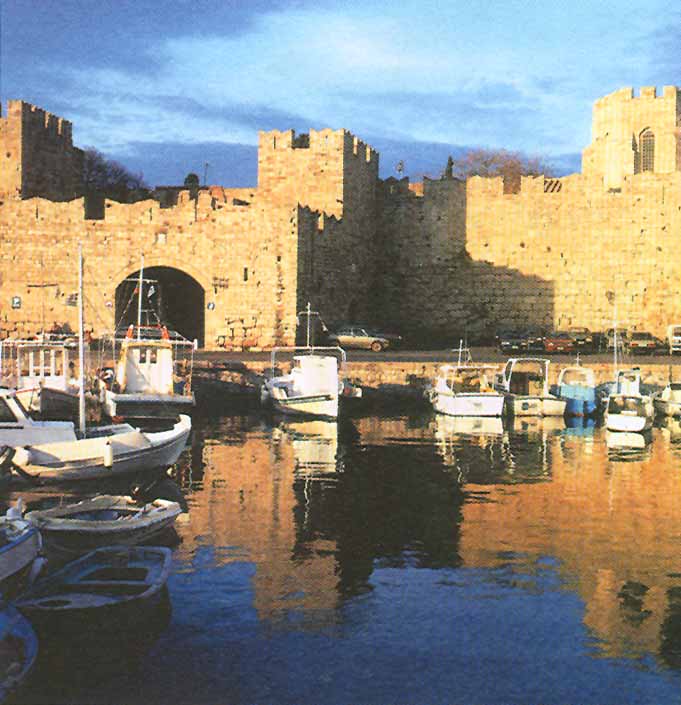 |
|
|
Rhodes |
|
 |
Rhodes, with many loyal friends all over the world, the meeting point of three civilizations, is the cosmopolitan of the Dodecanese, which throbs with life even during offseason. Its geographical location has played an important role in this, as ,well as its enviable sunlight. Besides, it is not accidental that myth wants it to be the island of the god Sun. "From the deep water, the island of Rhodes bloomed, a child of Aphrodite, goddess of love, to become the Sun's bride': That is how the ancient poet Pindaros describes Rhodes, a description corresponding to the aura the island gives off. Built at the northern part of the island, the city of Rhodes exudes simultaneously an aroma of the East and West. It is world-wide famous for the Medieval City. In 1988, the Medieval City was acknowledged as a City of World Cultural Heritage. The Medieval City is a mixture of different architectures from different historical periods, with dominating period that of when the Knightly Order of St. John was on the island and also that of the Ottomans. Today, it is a living part of the modern city, where many commercial, tourist and recreational activities develop, while it also includes residential areas. It is inhabited by 6000 people, who live and work within the same buildings where St. John's knights lived 6 centuries ago. |
|
The most characteristic street is that of the Knights, where the visitors walk there, they believe that a knight on his horse will appear right in front of them. Crossing the famous Avenue of the Knights one reaches the highest point of the Castle of the Knights. That is where the palace of the Great Magistrate stands dominating, and one can visit its impressive halls with furniture and other articles of that time. |
|
| OVER RODINI, at the location Pefkakia, there is a family tomb, which was named the tomb of Ptolemy, as there is a legend that says that it was dedicated to Ptolemy I. Finally, it must be noted that the necropolis of Rhodes is in this area (4th-3rd century B.C.), which reaches up to Phaneromeni and Karakonero. There one may see tomb complexes with Dionysian figures engraved on the rocks. In the area of Agios Stephanos (Monte Smith) there is the Ancient Acropolis of Rhodes. |
 |
| At the Acropolis, one may see the remains of the temple of Pallada Athina and Poliea Zeus, while lower down there is the ancient stadium, built in the 2nd century B.C.. Next to the ancient stadium there is the ancient Conservatory, while in the same area there are peculiar caves, that were the worshipping temples of the Nymphs. Although Rhodes gets the majority of visitors in the winter, due to its large ultra-modern and luxurious hotel complexes, there are also other sights one may see all over the island. Some of them are the valleys of the Butterflies and the Seven Springs, as well as the beautiful forests on the whole island, where deer, the symbols of Rhodes, find shelter there. Many Byzantine churches with elaborate frescos are scattered in the area. Of course, as the island is considered to have been inhabited at the end of the Neolithic period (4000 B.C.), there are remains of ancient cities and settlements, among which are the three big cities of the island, lalysos, Kamiros and Lindos. Today, as there are over 100,000 people living permanently on the island of Rhodes, about 60.000 of them in the city, there are many artistic and cultural events being organized almost daily, throughout winter. Besides, the city is full of shopping centers with a satisfactory market, which covers the needs of local people and visitors. |
 |
|
(Posted originally March 2006; reformatted February 2007) HCS readers may wish to view other articles and releases in our permanent, extensive archives at the URL http://www.helleniccomserve.com/contents.html. especially other travel articles about Greece or ancestral Greek lands at http://www.helleniccomserve.com/archivetravelingreece.html |
|
|
|
|
|
2000 © Hellenic Communication Service, L.L.C. All Rights Reserved.
http://www.HellenicComServe.com |
|
